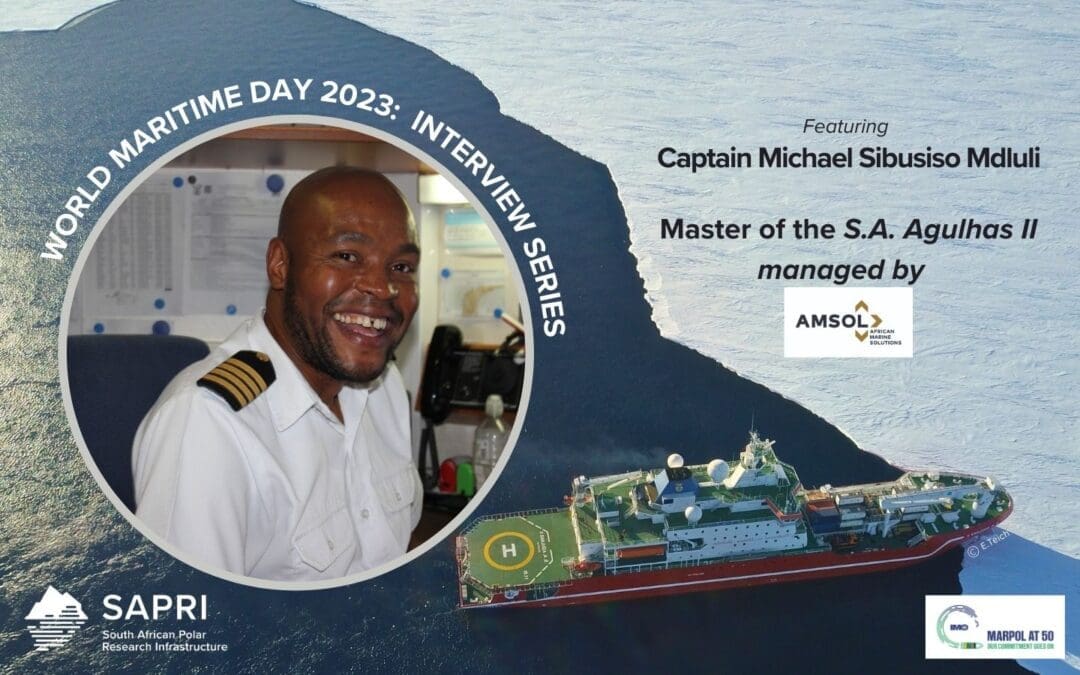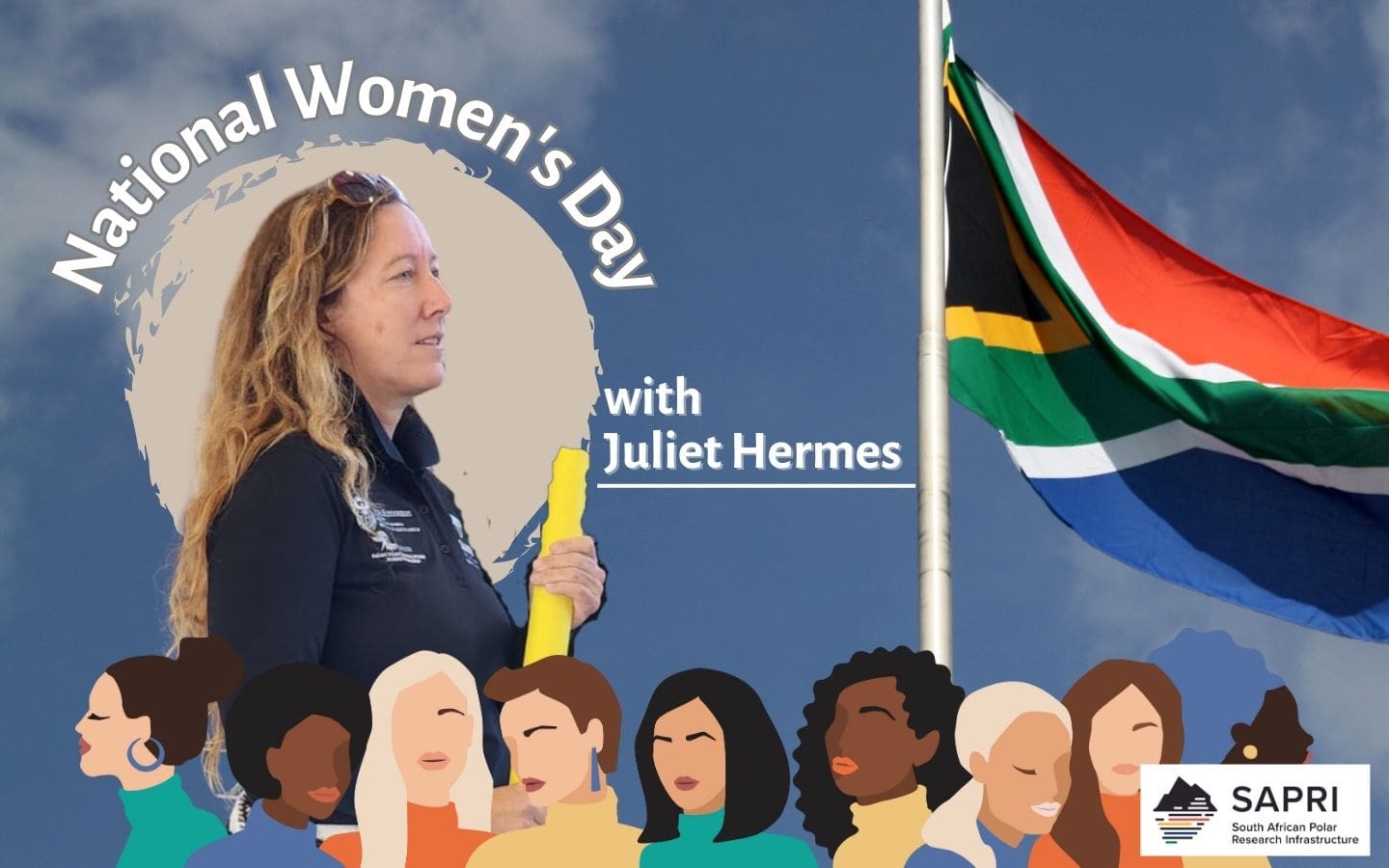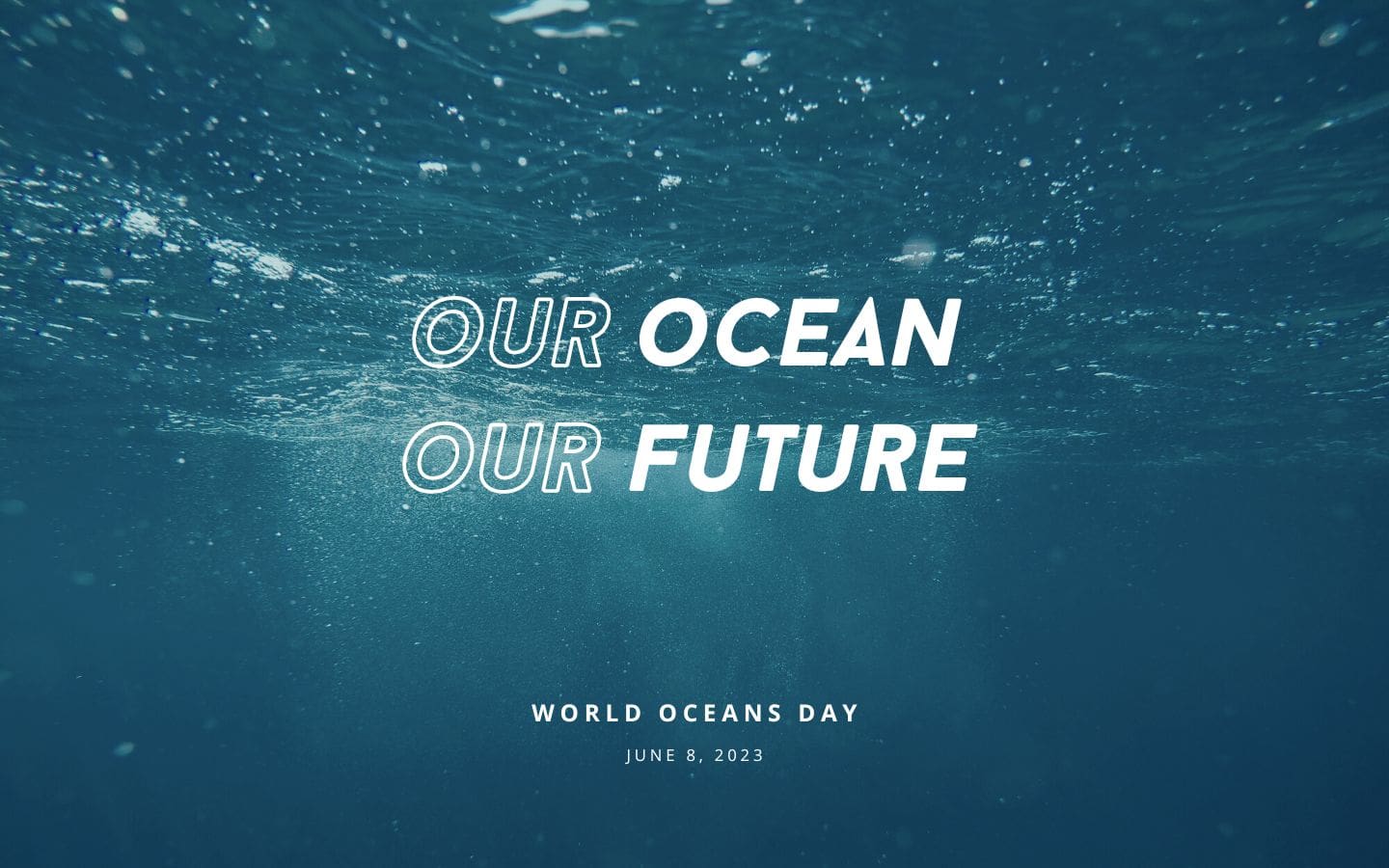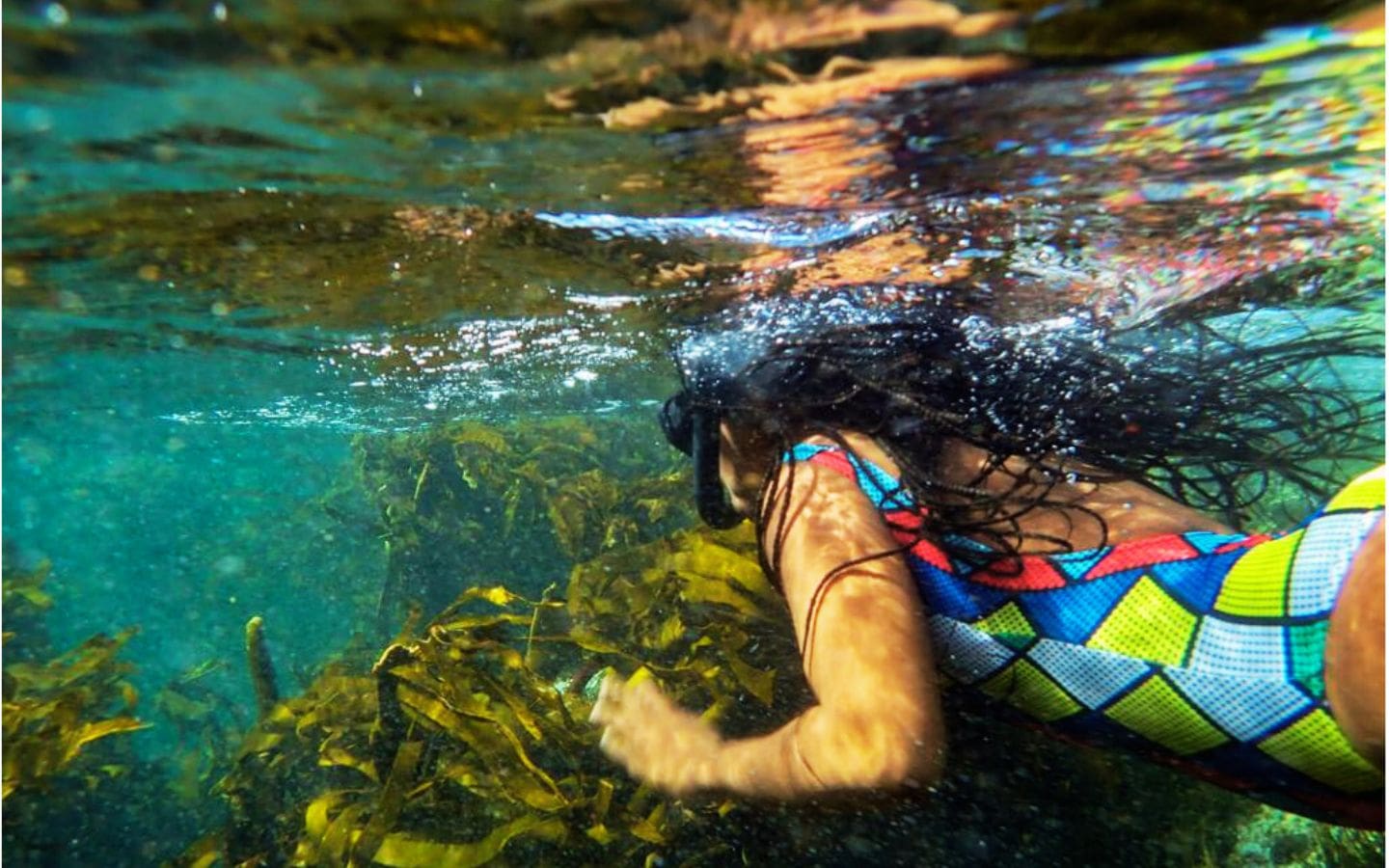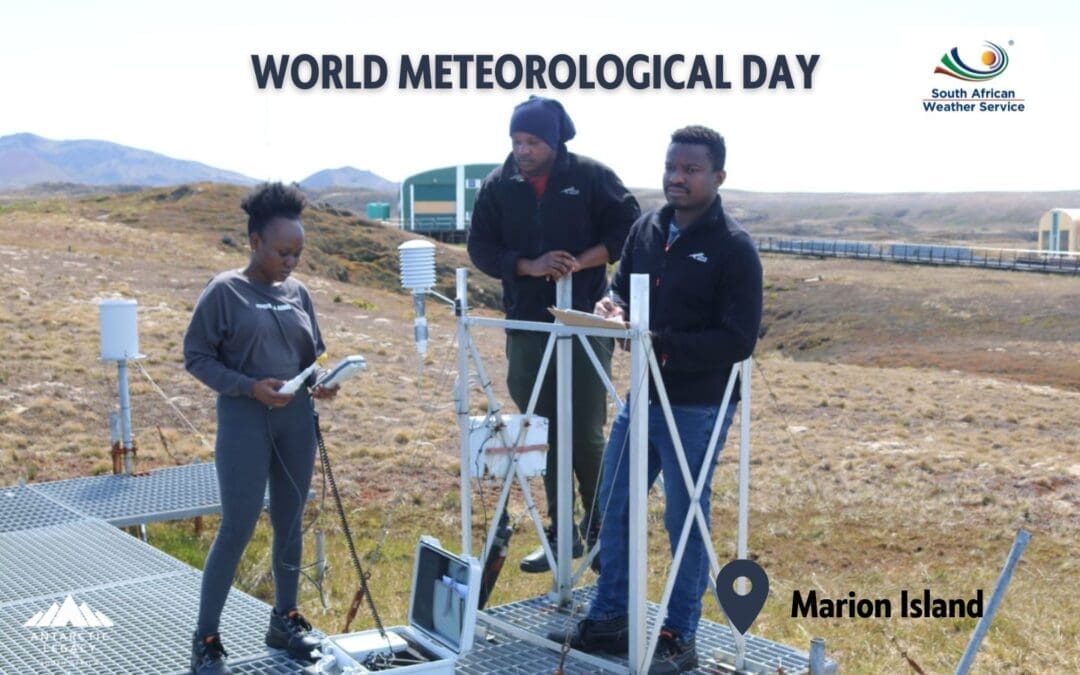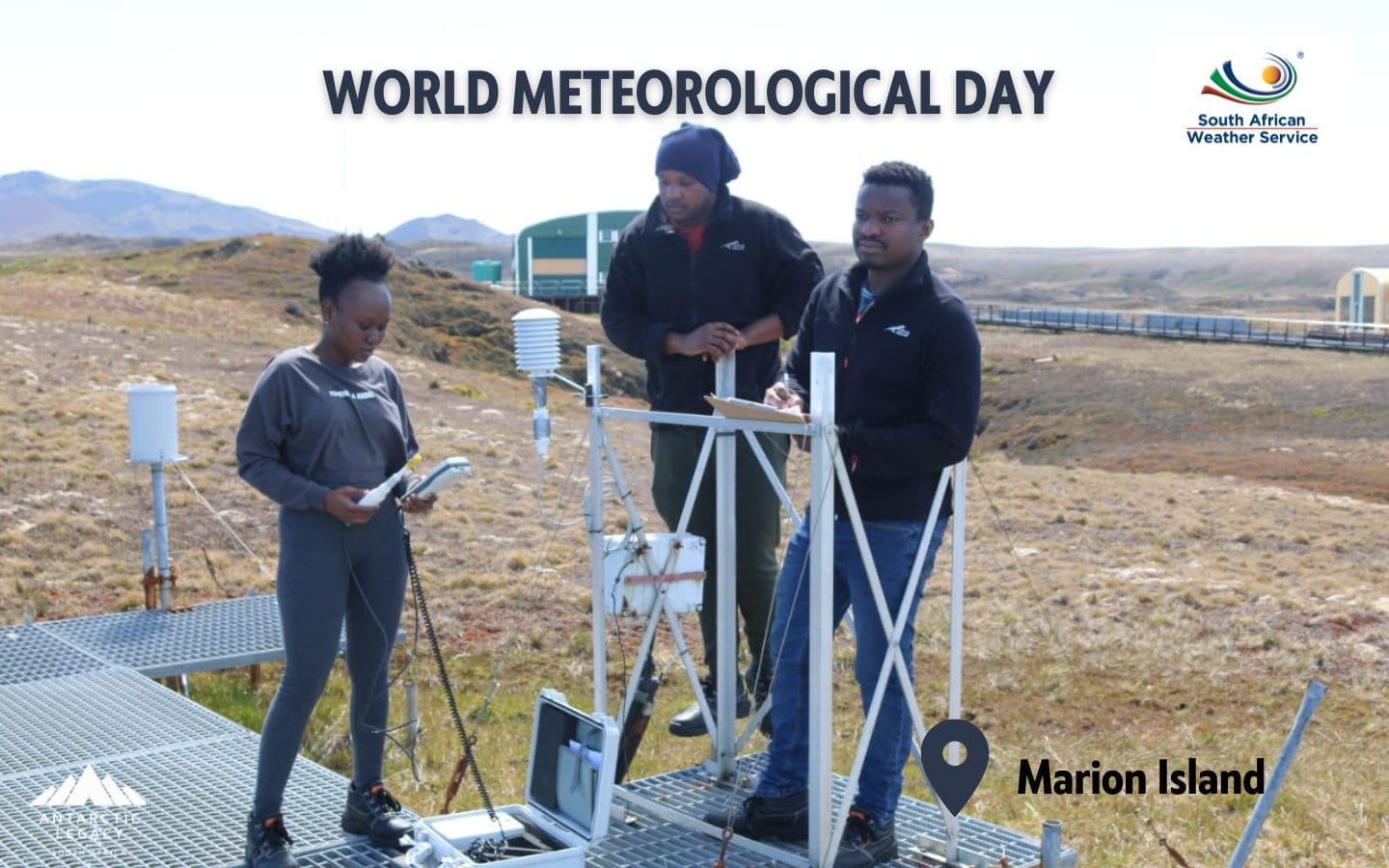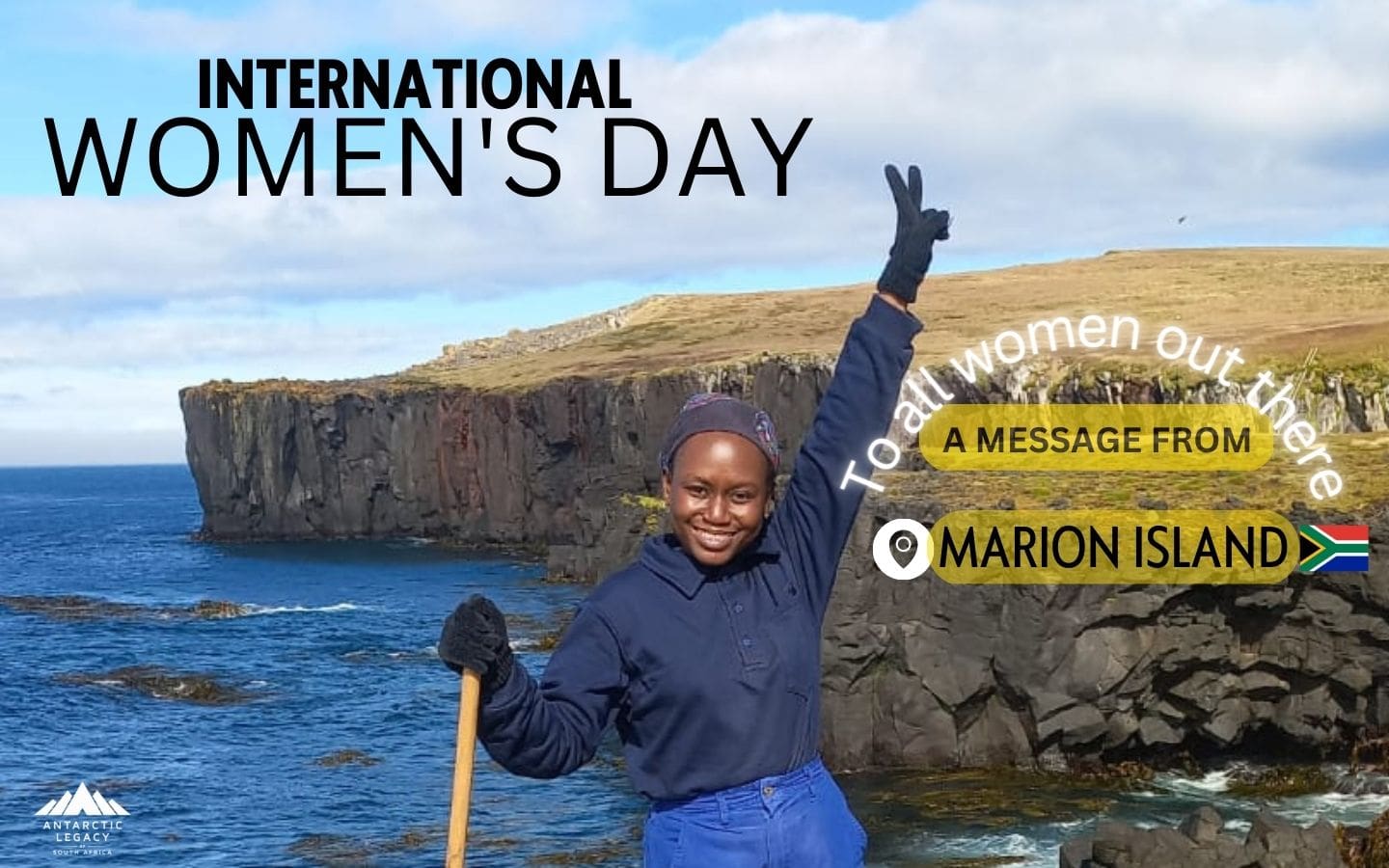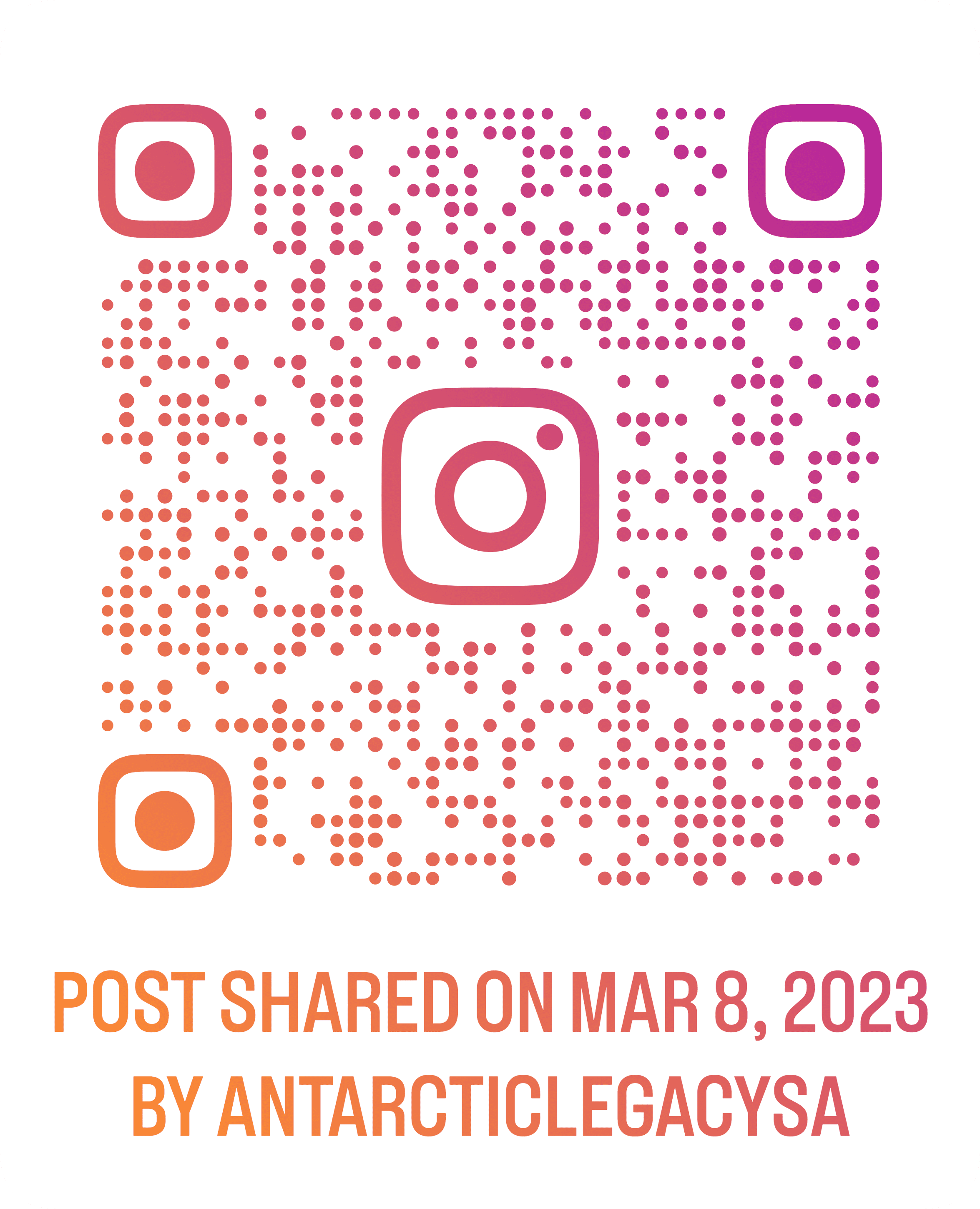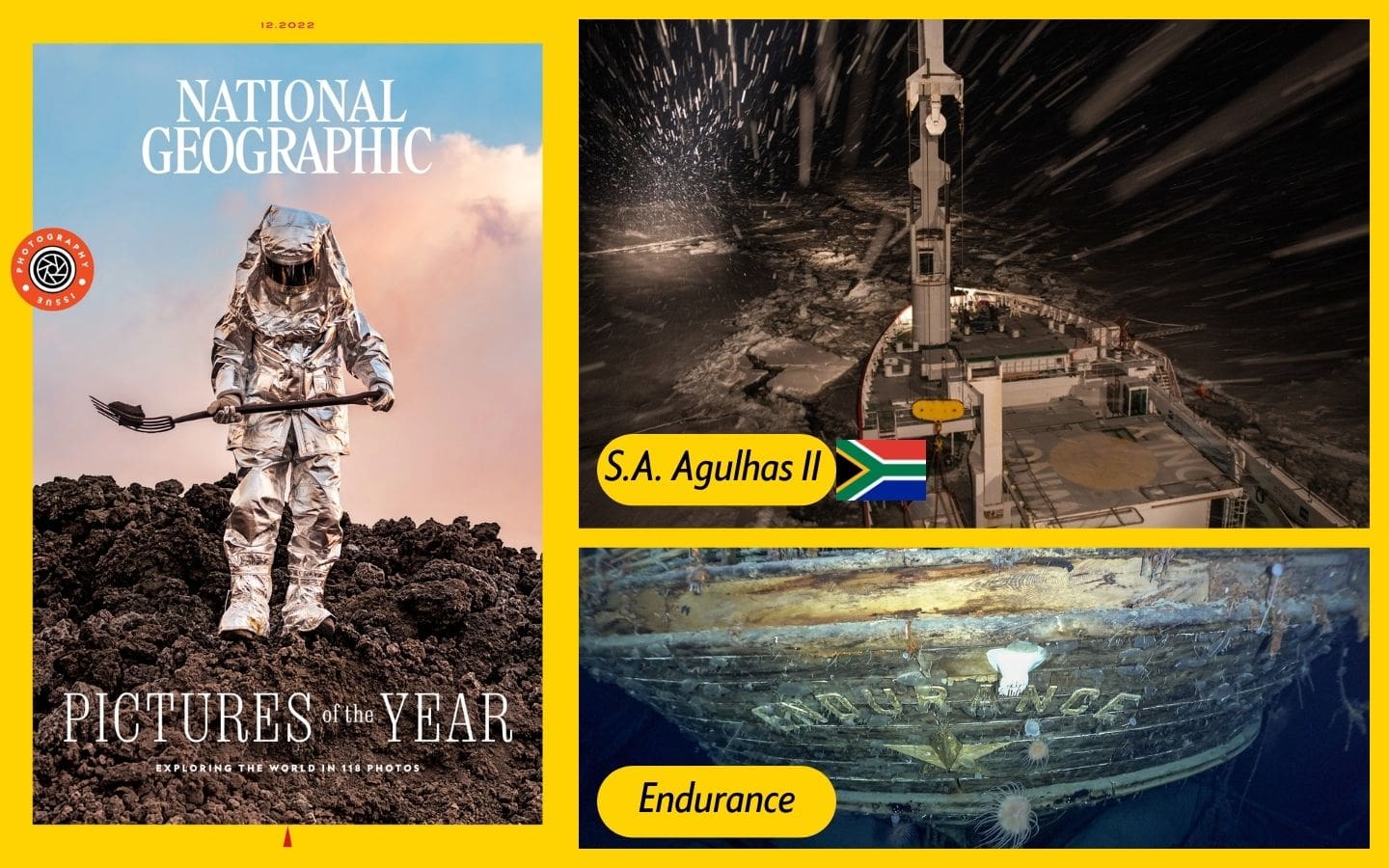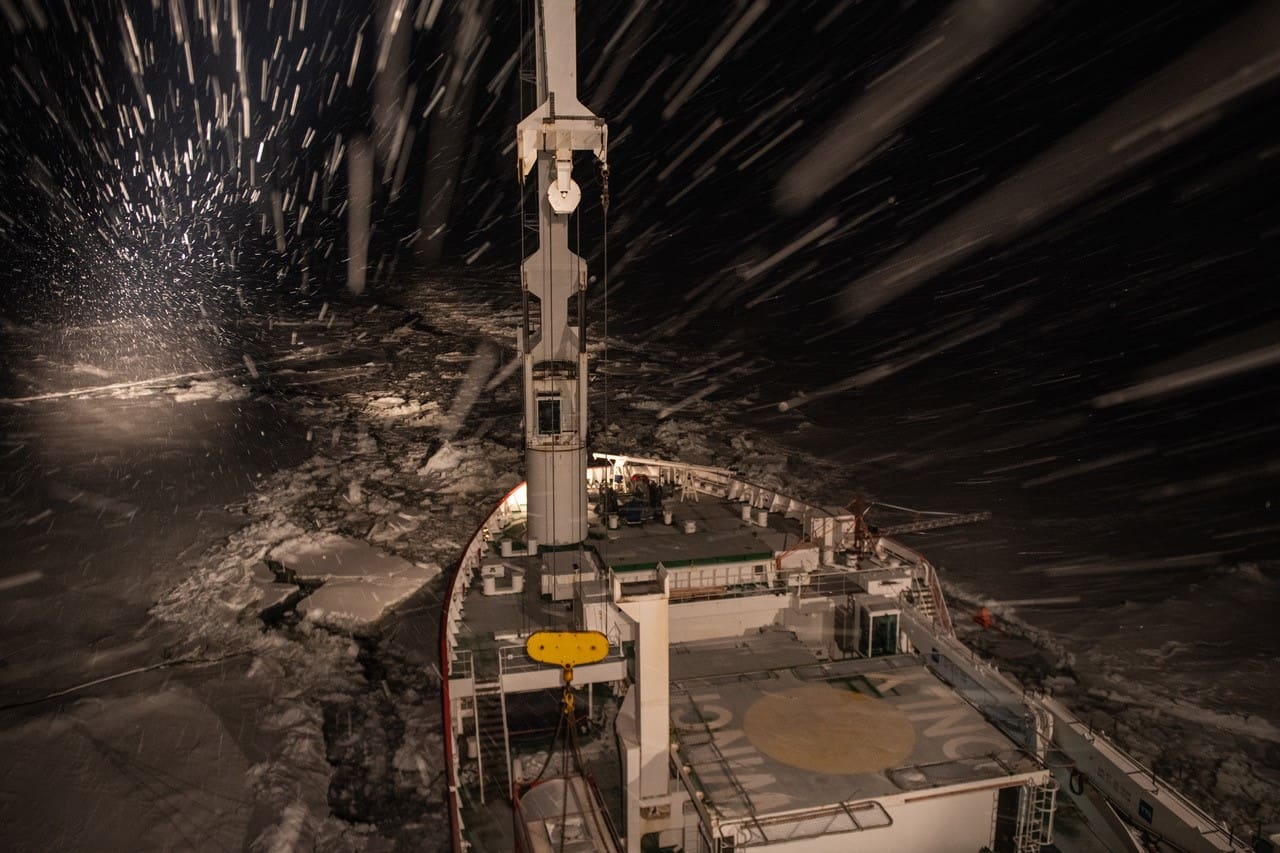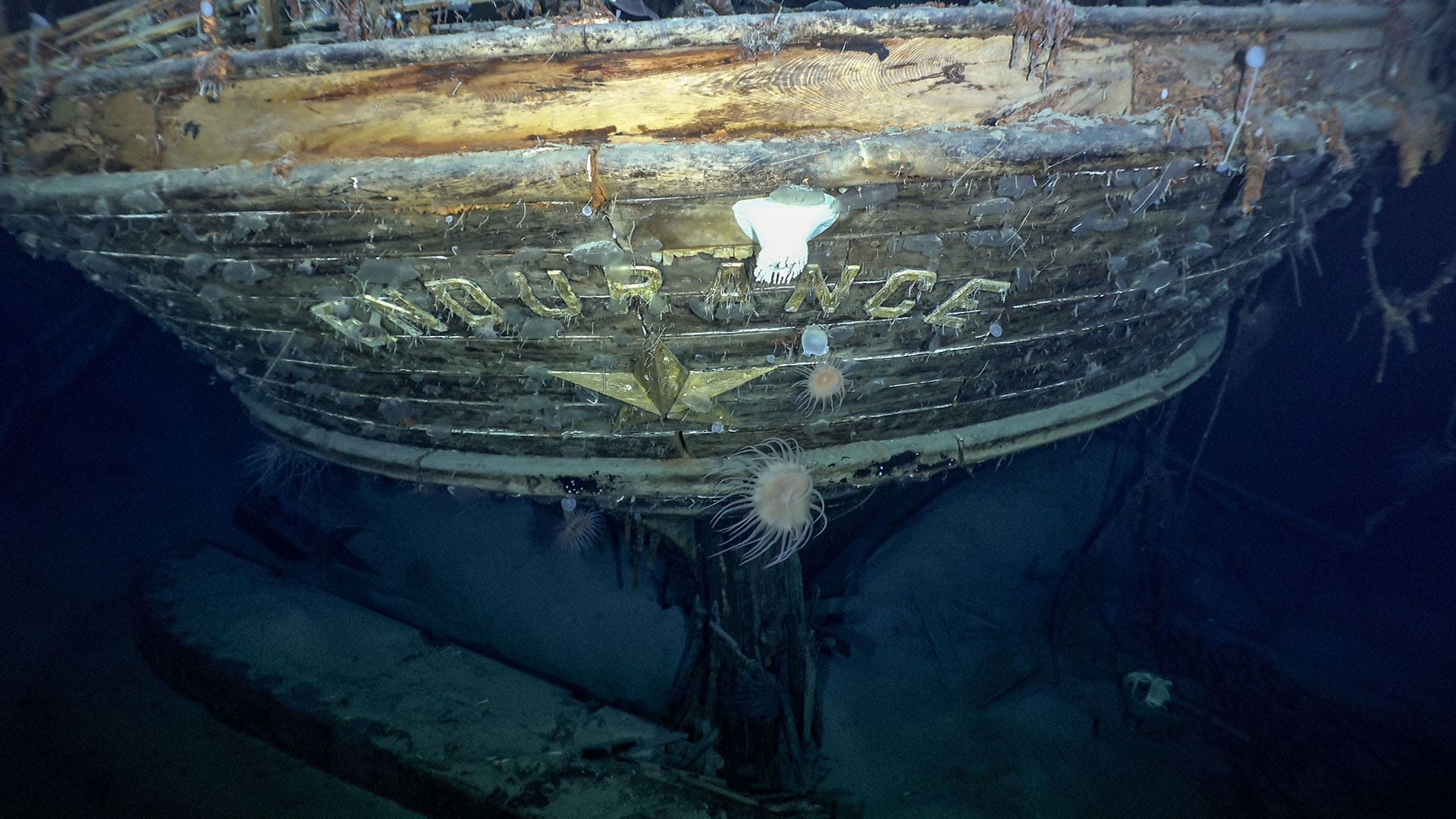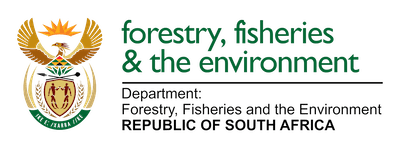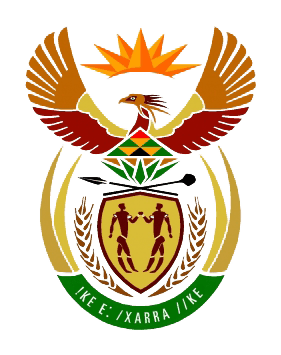
by Rabia Mathakutha | Sep 20, 2023 | Antarctica, Commemorative Days, Environment, International Days, SA Agulhas II, SA Polar Infratsructure, SA Polar Research Infrastructure, SANAP, SAPolarRI, SAPRI, Uncategorised

Leading up to World Maritime Day 2023
Every year on the last Thursday of September, nations around the world come together to celebrate World Maritime Day. This international observance aims to highlight the crucial role that shipping and seafaring play in our global economy and emphasise the importance of sustainable maritime practices. World Maritime Day provides an opportunity to raise awareness about the challenges faced by the maritime industry and to promote international cooperation in addressing them.
According to the International Maritime Organisation (IMO), This year’s World Maritime theme is “MARPOL at 50 – Our commitment goes on”. The theme spotlights the International Convention for the Prevention of Pollution from Ships (MARPOL), which covers the prevention of pollution of the marine environment by ships from operational or accidental causes.
Acknowledging the Role of South African Seafarers in the Maritime Industry
The maritime industry is the backbone of global trade. This industry connects countries, facilitates economic growth, enables scientific and research expeditions and plays a vital role in our everyday lives. However, the success of this enormous industry would not be possible without the men and women who sacrifice their time on land to serve our maritime needs. In recognising this, the South African National Antarctic Programme (SANAP) and the South African Polar Research Infrastructure (SAPRI), would like to honour some of our local seafarers working on board the South African research and supply vessel, the S.A. Agulhas II during various marine and Antarctic research related expeditions through the Southern, Indian and Atlantic Oceans. We would like to honour these seafarers in The Maritime Interview Series, leading up to World Maritime Day, on Thursday, 28 September 2023.
The Maritime Interview Series Part 1 features Captain Michael Sibusiso Mdluli, Master of the S.A. Agulhas II.
What is the Captain’s role on the ship?
“As the captain (also known as the Master), I hold the highest-ranking position on the vessel and I’m responsible for various critical tasks. I oversee the navigation, operations and safety of the S.A. Agulhas II, including managing and leading the crew. I have to ensure compliance with regulations and laws, oversee the vessel maintenance and administration, and handle commercial and legal responsibilities. My primary focus is thus on maintaining the safety, efficiency, and overall well-being of the vessel, crew, and cargo throughout its operations”.
Captain Mdluli’s Background and Journey into a Seafarer Career
Captain Mdluli grew up in a small village of Kwathunyana, which is 50 km south of Durban, and currently resides in Kloof, Durban. From humble beginnings as a Third Officer to obtaining the internationally recognised Master’s Certificate of Competency (Unlimited) in 2012, Captain Mdluli has been a seafarer for over 20 years. He has worked as a Master on several cargo vessels before joining the S.A. Agulhas II in 2016, and maintains that his experience on a research vessel such as the S.A. Agulhas II is both challenging and enjoyable. Some of the new and exciting experiences he mentioned about commanding the S.A. Agulhas II were learning how to navigate sea ice, a critical role during SANAE IV expeditions to Antarctica, as well as working with and learning from the scientists and researchers aboard the S.A. Agulhas II during research expeditions.
Captain Mdluli holds a Master’s Certificate of Competency (Unlimited), which makes him qualified to command a vessel of any size in the world’s oceans.
What do you like the most about your job?
“I enjoy travelling, seeing new places, meeting and interacting with different people, and learning from others. I also enjoy sharing my knowledge with others and empowering and inspiring the youth of South Africa”. To this, Captain Mdluli spoke about his involvement in school outreach programmes, where he visits local high schools in KwaZulu-Natal to share his knowledge and experiences as a seafarer.
What are some of the challenges that you experience in your line of work?
“Being away from loved ones and sometimes the long working hours that come with being a captain and overseeing everything and everyone”. He mentioned that he often has to be the last man standing. Captain Mdluli expressed that as much as he enjoys working with people and sees the crew as part of his family and always strives to get to know his crew on a personal level, this also comes with the challenge of dealing with individual personal matters that he is not always equipped to. However, he mentioned that the vessel managing agent, African Marine Solutions (AMSOL), offers counselling for their staff, which helps provide support during long voyages at sea.
Away from home: See the S.A. Agulhas II voyage schedule here.
Advice from Captain Mdluli:
“The best advice I would give to anyone interested in pursuing a career in maritime or wants to become a ship captain one day, is to choose STEM subjects at school (i.e., Science, Technology, Engineering, and Mathematics). Furthermore, to work at sea, you must have a positive mindset and show resilience, and most importantly, you must have a passion for it. Therefore, when looking to pursue any career, talk to the people who’ve been there or doing something related, to find out if it’s right for you”.
World Maritime Day reminds us of the vital role that the maritime industry plays in our interconnected world. The maritime industry is also particularly crucial in enabling the science and research in the Antarctic region and Southern Ocean through SANAP. SANAP recognises the global and national importance of safeguarding the environment of the Antarctic and Southern Ocean and protecting the integrity of ecosystems, both marine and terrestrial, in the region.
As we navigate towards a more sustainable future, let us recognise the invaluable efforts of seafarers who continue to navigate the world’s oceans, connecting nations, and powering global trade, science and research.
Photo Credit: Rabia Mathakutha (South African Polar Research Infrastructure) and Eduan Teich via the Antarctic Legacy of South Africa (ALSA) Archive.
Written by: Rabia Mathakutha, South African Polar Research Infrastructure, 20 September 2023
Edited by: Anche Louw, South African Polar Research Infrastructure and Ria Olivier, Antarctic Legacy of South Africa

by Ria Olivier | Aug 9, 2023 | Commemorative Days, Important Dates, News, Research, SA Polar Research Infrastructure, SAPolarRI, SAPRI, Science, Southern Ocean, Women in Science

Prof Juliet Hermes is the Manager of the South African Polar Research Infrastructure (SAPRI), the Manager of the NRF- SAEON Egagasini Node, Honorary Professor at the Nelson Mandela University (NMU), Professor at the University of Cape Town (UCT) and heavily involved in a number of international programs and committees where she represent the fantastic work being done in South Africa and Africa as a whole (see list below). She is a passionate physical oceanographer who loves the ocean, a mom of two boys and her life is guided by the words of late Nelson Mandela:
“What counts in life is not the mere fact that you have lived. It is what difference we have made to the lives of others that will determine the significance of the life we lead.”
She makes a difference in her working environment through her collaborative nature and approachable demeanor.
“At the NRF- SAEON Egagasini Node I am supported by an incredible team consisting of biodiversity, modelling, observing and engagement specialists and of course administrative support. Together we advance our understanding of the marine offshore environment and our ability to detect, predict and react to global change through long term observations, modelling and research data”.
From Interim SAPRI Manager to SAPRI Manager
Juliet was initially involved in SAPRI as the South African Environmental Observation Network (SAEON) institutional champion and worked closely with Dr Tammy Morris and Prof Marcello Vichi in writing the original proposal and following business plan for SAPRI. As the manager of the NRF-SAEON Egagasini Node, which hosts the SAPRI LTO-Land and LTO-Ocean integrated facilities (IFs), she was made the interim manager of SAPRI in November 2021. Following discussions with the National Research Foundation (NRF), Department of Science and Innovation (DSI) and Department of Forestry, Fisheries and the Environment (DFFE) this role was then made permanent on the 1st of April 2023.
“It is a team effort with SAPRI and SAEON staff working closely together and the community also supporting us through the different user fora”.
Read more about the SAPRI IFs here.
Role of the SAPRI Manager
The role will change over time, the first 3 years will be overseeing the implementation of SAPRI – setting up the governance, employing the staff, overseeing the user fora groups, reporting to the advisory committees, the NRF and the DSI, working with DFFE, the South African National Antarctic Programme (SANAP) and the Antarctic Legacy of South Africa (ALSA) to integrate SAPRI and to maximize marine and polar sciences in South Africa. Understand the stakeholder needs and support the current community, whilst driving transformation and bringing in new stakeholders in terms of disciplines and institutes. A key aspect is also ensuring the sustainability of long term observations in the marine and polar space, and resolving long going issues between science and logistics.
Once the implementation has happened the role will be more in overseeing the operations, sourcing additional funding, driving transformation and continuing to work closely with DFFE and SANAP.
My expectations for SAPRI are for it to fulfill its vision: “to enable balanced and transformed research growth across the multiplicity of marine and polar disciplines, and to maintain and further expand the world-class, long-term observational research infrastructure and datasets already established within the South African marine and polar research environment.”
Juliet represent South Africa (and Africa) in the following international programs and committees:
- Ocean Decade task force to implement the Africa roadmap (read more here).
- Chair of the Climate and Ocean – Variability, Predictability, and Change (CLIVAR) Indian Ocean Regional Panel.
- Chair of the Indian Ocean Rim Association Academic Group (IORAG) and the node hosts the South African chapter for this.
- Ocean Decade working groups (on capacity development and adaptation).
- Executive committee member of International Association for the Physical Sciences of the Oceans (IAPSO).
- Vice chair on the Observation Coordination Group.
- Work closely with The Global Ocean Observing System for Africa (GOOS for AFRICA).
Read more: Second professorship for SAEON’s Juliet Hermes

Images and text supplied by Juliet Hermes.
Anche Louw, South African Polar Research Infrastructure, 09 August 2023.

by Rabia Mathakutha | Jun 8, 2023 | Announcement, Antarctica, Commemorative Days, Current Event, Discover, Environment, Important Dates, International Days, Marine Protected Area, Oceanography, SA Agulhas II

Preserving our precious marine ecosystems
Every year on the 8th of June, the world comes together to celebrate World Oceans Day, a global event dedicated to honouring and protecting our vast marine environments. This special day serves as a reminder of the significant role oceans play in sustaining life on Earth and the urgent need to conserve and restore their health. With over 70% of our planet covered by oceans, it is crucial to recognise the immense value they hold and take action to safeguard their future.
World Oceans Day is a day to appreciate the abundant biodiversity that thrives in these waters and reflect on the numerous benefits oceans provide, such as climate regulation, food security, and economic resources.
Event of interest on 8 June 2023
Significance of World Oceans Day
The delicate marine ecosystems face numerous threats, including pollution, overfishing, habitat destruction, and climate change. World Oceans Day emphasises the need to protect and restore these ecosystems through sustainable practices.
Promoting conservation efforts
What can you do?
Individuals can participate by organising or joining local beach cleanups, where they can help remove litter and prevent it from reaching the oceans. By minimising the use of single-use plastics and making environmentally conscious choices, individuals can also contribute to reducing pollution in our oceans.

Recreational diving with a purpose. Cleaning the ocean one dive at a time. Image credit: Thando Mazomba.
Take-home message
World Oceans Day is an annual celebration that reminds us of the vital role oceans play in sustaining life on Earth. It urges us to recognise the urgent need to protect and restore marine ecosystems through sustainable practices, education, and policy changes. By coming together on this special day, we can create a collective voice for ocean conservation and work towards a future where our oceans thrive, benefiting both present and future generations. Let us celebrate World Oceans Day and commit to preserving the precious wonders of the deep blue.
On social media
Rabia Mathakutha & Anche Louw, South African Polar Research Infrastructure (SAPRI DPS Node), 08 June 2023

by Ria Olivier | Mar 23, 2023 | Commemorative Days, International Days, Marion Island, Meteorology, Overwintering Team, SANAP, Southern Ocean, sub-Antarctic

Message from the Metkassies (Meteorological Technicians) currently on Marion Island.
Happy World Meteorological Day from the Metkassies on the 79th Marion Island overwintering team.
The South African Weather Service (SAWS) has been running a Meteorological station at Marion Island since 1950s.
As meteorological technicians, we preform monthly conformance and verification of the Automatic Weather Station (AWS) instruments.
This is normally done on a monthly basis to verify, check and maintain the weather station to ensure that the required standards of the South African Weather Service (SAWS) are met. In South Africa, SAWS is the voice for weather and climate forecasting and also a member of the World Meteorological Organization (WMO).
Happy Meteorological Day from the Metkassies on the 79th Marion Island overwintering team.
Senior Metkassie: T. Sikhwari
Assistants Metkassies: T. Tshitavhe and S. Faltein
Read more about the Marion met station here
Text: Thendo Sikhwari, Senior Meteorological Technician, M79
Edited: Anche Louw, South African Polar Research Infrastructure (SAPRI), 23 March 2023

by Ria Olivier | Mar 8, 2023 | Commemorative Days, International Days, Marion Island, Meteorology, Overwintering Team, Southern Ocean, sub-Antarctic, Team member, Women in Science

In celebration of International Women’s Day, we came in contact with Tanganedzani “Tanga” Tshitavhe. She is an Assistant Meteorological Technician, for the South African Weather Service (SAWS), on the sub-Antarctic Marion Island.
This is a strong woman, with passion for her work and the sub-Antarctic environment. She also has a great sense of humour.
This is her message for all women out there:
“Today we celebrate the resilience, strength, grace, and beauty of women all around the world. On this day, let’s remember the importance of equity, work towards creating a more inclusive world, and honour the contributions and achievements of women”.
I mentioned she has a great sense of humour:
Today we are having a clear sky (sunshine) on Marion Island and as the Weather-Lady, here is a Sun pun.
Question:
Why is the Sun not very heavy to carry?
Answer:
Because it is very light
Wishing you all a happy International Women’s Day day filled with joy and laughter.

Text and photos supplied by: Tanganedzani Tshitavhe (Marion79)
Edited: Anche Louw, South African Polar Research Infrastructure (Data, Products and Society Node), 08 March 2023.

by Ria Olivier | Mar 5, 2023 | Antarctica, Commemorative Days, News, SA Agulhas II

Today, 05 March, marks the one-year anniversary of the discovery of the Endurance, the sunken ship of Sir Ernest Henry Shackleton. Two images taken on the Endurance22 expedition were included in the National Geographic Pictures of the Year (2022).
In February and March 2022, a major international scientific expedition explored one of the coldest, harshest and most remote places on earth, to find Sir Ernest Shackleton’s lost ship, the Endurance. The Endurance22 expedition was the first to locate and investigate Sir Ernest Shackleton’s lost ship, which sank in the Weddell Sea in Antarctica in 1915.
What a privilege it is for the South African research and supply vessel, with ice braking capacity, the S.A. Agulhas II, to have been selected as the main infrastructural support for the Endurance22 expedition. The S.A. Agulhas II and its crew is part of this very special day in history and to top it off, National Geographic has included an image of the S.A. Agulhas II in its 2022 Pictures of the Year selection (see image below). The image was taken by Esther Horvath, the official photographer aboard during the Endurance22 expedition. The image shows the S.A. Agulhas II maneuvering among ice floes in the Weddell Sea in stormy weather. National Geographic states that “out of millions of images, just 49 were selected as the best photos of the year”.

Photo of the S.A. Agulhas II maneuvering among ice floes in the Weddell Sea in stormy weather. Credit: Esther Horvath (supplied).
Esther Horvath’s story behind the photo:
The ship was busy for 24/7 as time was tight for the search. I took the photo on the night of February 26, 2022 on the S.A. Agulhas II in the Weddell Sea while the ship was navigating between thick ice floes. Navigation was possible using satellite imagery over the ice floes. During the night after completing one search, the ship was moved to the next search area. I was standing in the snowstorm above the bridge outside on the deck called the “monkey island.” It was very difficult for me to open my eyes because the snow was poking my eyes like needles. I could only stand there for a few minutes because the wind and the very cold temperatures bit into my bones.
Another image selected for the National Geographic 2022 Pictures of the Year is the image of the stern of the Endurance wreck, taken by Nico Vincent and his autonomous underwater vehicle (AUV) team.

Stern of the Endurance wreck taken by Nico Vincent and his AUV team. Source: https://endurance22.org/endurance22-news/endurance22-gallery.
Meet Esther Horvath, the official photographer aboard the S.A. Agulhas II during the Endurance22 expedition

Esther Horvath. Credit: Stefanie Arndt
Esther Horvath is a contributor photographer for National Geographic and a photographer for the German Alfred Wegener Institute for Polar and Marine Research. Since 2015, her work has focused on documenting climate research and scientific expeditions in the polar regions with behind-the-scenes science stories. By documenting the work of scientific groups and the lives of scientists who provide important climate data, Esther hopes to help people better understand what is actually happening in the polar regions and, in collaboration with scientists, raise public awareness of this fragile environment. In 2020, Esther won 1st prize at the World Press Photo Awards in the Environmental single category. In 2022, she received the Infinity Award from the International Center of Photography in New York for her work raising awareness about conservation, environmental justice, and climate change. She is the author of “Into the Arctic Ice”, which chronicles the largest scientific expedition to the Arctic Ocean of our time, called MOSAiC.
Watch: Endurance podcast by National Geographic about Endurance22
Check out the Endurance22 expedition team (including 23 South Africans)
If you have a National Geographic subscription, have a look:
2022 Pictures of the Year
2022 Pictures of the Year: Behind the scene stories
Text by: Esther Horvath, contributor photographer for National Geographic and a photographer for the German Alfred Wegener Institute for Polar and Marine Research.
Edited by: Anche Louw, South African Polar Research Infrastructure (Data, Products & Society Node), 05 March 2023.
